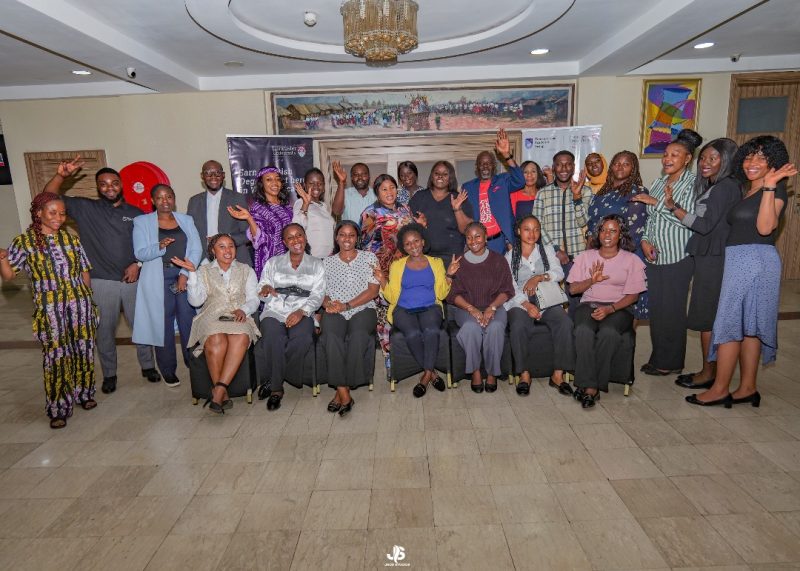Her Majesty’s Ship Lancaster, one of the Royal Navy’s state of the art Type 23, Duke Class frigates, accompanied by her support vessel Royal Fleet Auxiliary Gold Rover, will berth at the Tema port between the 21st- 25th of October 2015. HMS Lancaster’s stay at the harbour from Wednesday 21st October will see the ships’ company partake in training sessions with the Ghana Armed Forces, re-decorate and set up a newly built school in Tema, and compete in sporting tournaments against the Ghana Navy and a mixture of local teams.
The ship will be open for an exclusive viewing from the 21st of October to selected schools and organisations. Visitors will be able to tour the upper deck, view the impressive weapon systems and see the new Wildcat Helicopter and her aircrew.
On the evening of October 21st 2015, the Commanding Officer of the Ship, Commander Peter Laughton MBE will host a reception on board for stakeholders across the Ghana Armed Forces, Government, and Civic society. The British Defence Adviser, Lieutenant Colonel, Ben Richards, will attend and open the reception. The reception will give way to three days of intensive training with Ghana’s Navy.
Background:
HMS LANCASTER was built on the Clyde by Yarrow Shipbuilders and was launched by Her Majesty The Queen, on 24 May 1990. She was commissioned into the Royal Navy on 1 May 1992. The close affiliation to Her Majesty continues today, earning LANCASTER the nickname “The Queen’s Frigate”. She is the sixth Royal Navy ship to bear the name. The previous LANCASTER had been launched for the US Navy in 1918 as a 1,100 tonne destroyer named USS PHILIP. In 1940 she was transferred to the Royal Navy and gained battle honours for Atlantic and Arctic Convoys, plus North Sea patrols.
HMS LANCASTER sailed from Portsmouth for her 9 month Atlantic Patrol Tasking (South) deployment on the 21st March 2015. During the deployment, HMS LANCASTER has sailed in excess of 27,000 nautical miles, made over 17 port visits, and travelled to 4 continents with highlights including the Panama Canal transit and Fleet Week in New Orleans.
HMS LANCASTER has been given the honour to be the first ship to deploy in the Royal Navy’s new uniform. The new uniform brings to an end 70 years of the old-style light blue shirt and dark blue trousers. The Ship’s Company have really taken to the new uniform: it’s more comfortable, looks smarter, and provides sailors with more protection. The additional pockets also make life easier when carrying the necessary tools. In another first HMS LANCASTER is the first ship to deploy with the Royal Navy’s newest helicopter, the Wildcat. Replacing the Lynx helicopter, the Wildcat has many improvements, making it a significantly more capable aircraft. It has a redesigned tail rotor system improving the strength and stealth of the aircraft whilst the aircrew benefit from the improved state-of-the-art cockpit with high tech communications, crash worthy-armoured seats and full 360 degree colour surveillance radar. The Wildcat, like its predecessor can be used in a variety of roles including anti-ship and anti-submarine protection, casualty evacuation, battlefield reconnaissance and as a general utility helicopter. The Royal Navy maintains a permanent presence in the South Atlantic and West Africa to provide ongoing protection and reassurance, conduct Defence engagement, and conduct maritime security patrols. The commitment consists of two warships; either a destroyer or frigate accompanied by a Royal Fleet Auxiliary vessel.
The UK has a responsibility to its citizens and its allies to endeavor to safeguard the high seas. This is why the Royal Navy protects home and international waters – making sure the global trade that Britain and the world depend on can proceed without a hitch. As the fifth largest economy in the world, the UK has responsibilities towards its allies and partners. The Royal Navy plays a crucial role in fostering these enduring and lasting alliances with other nations.




